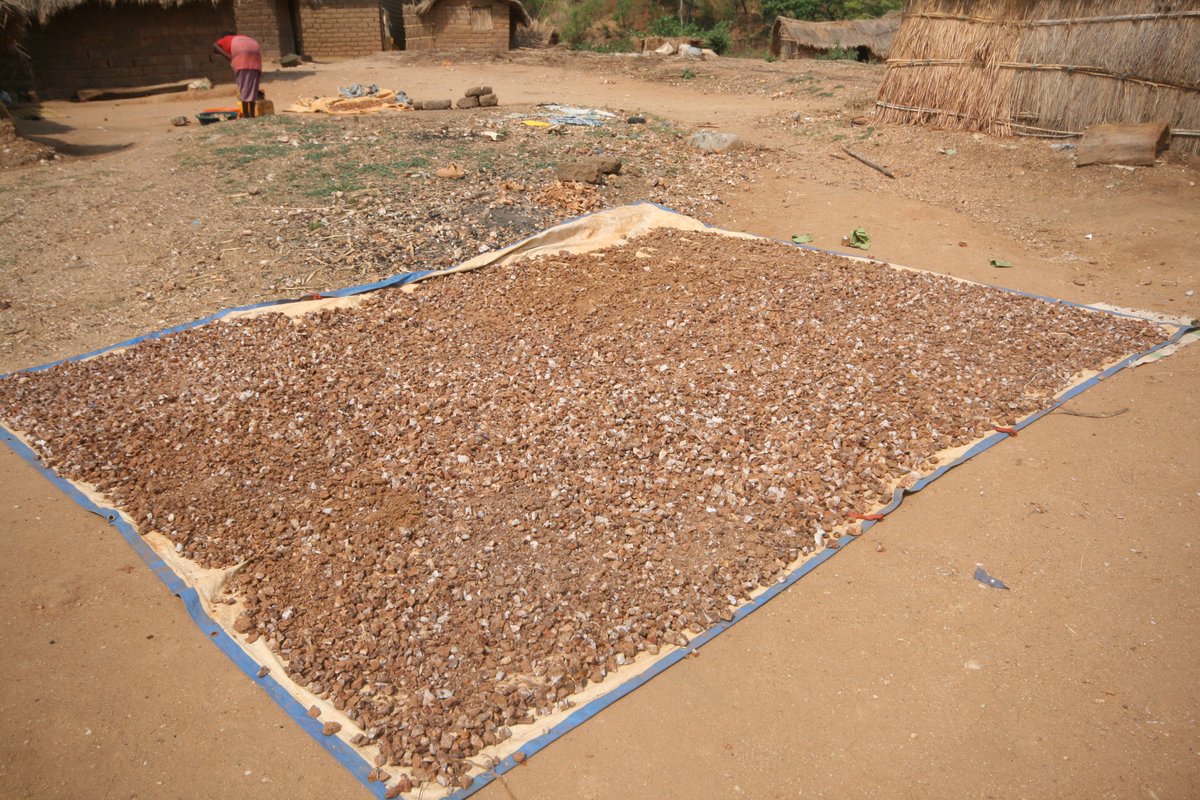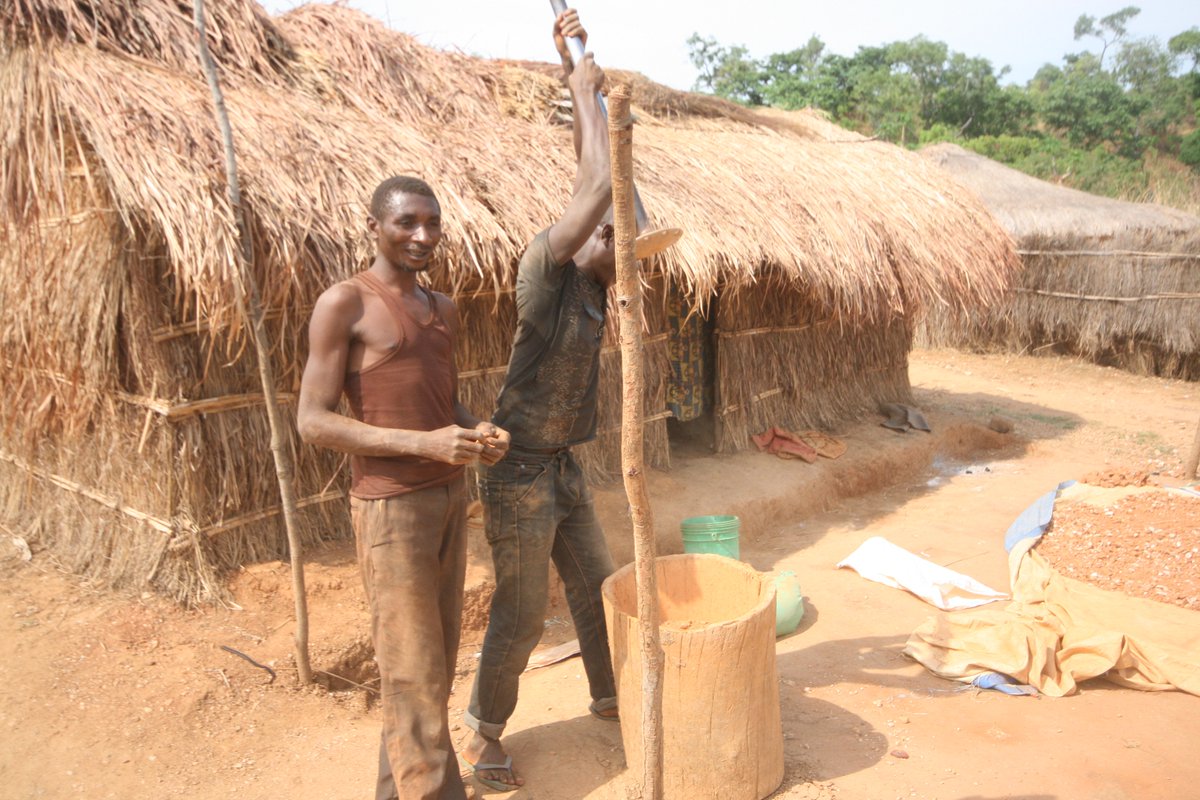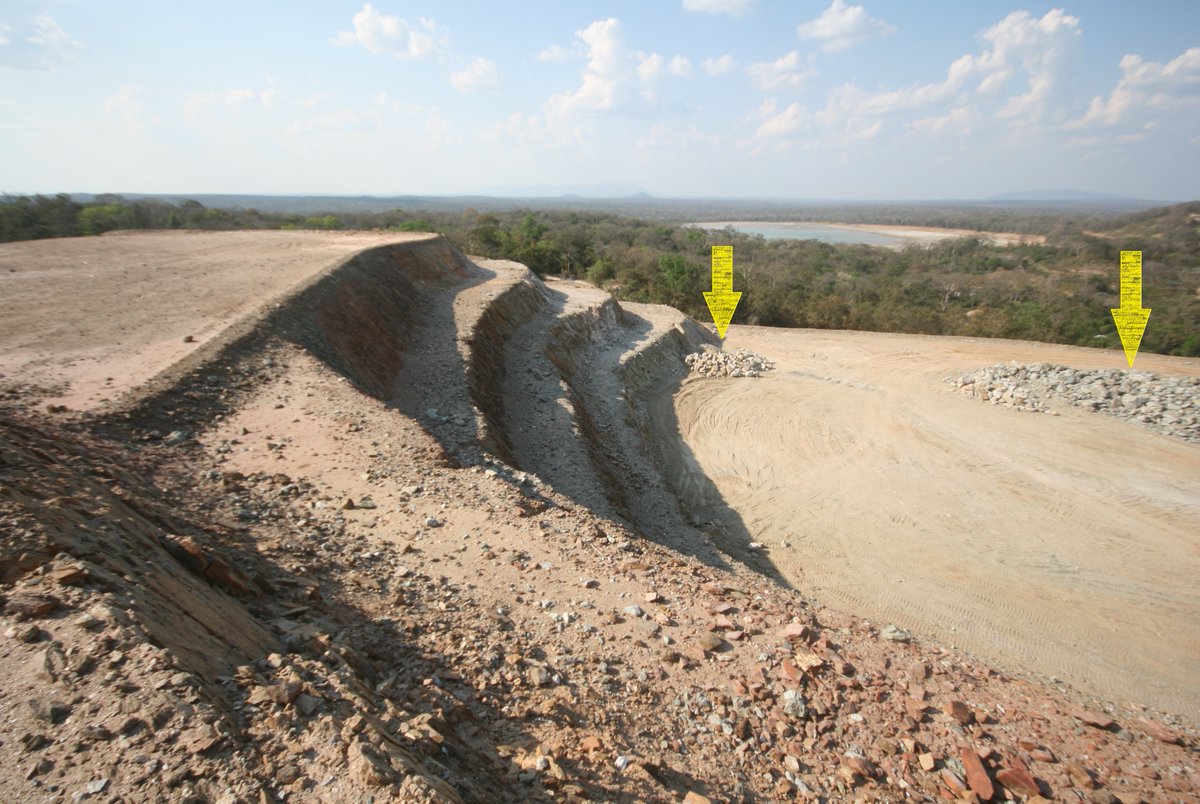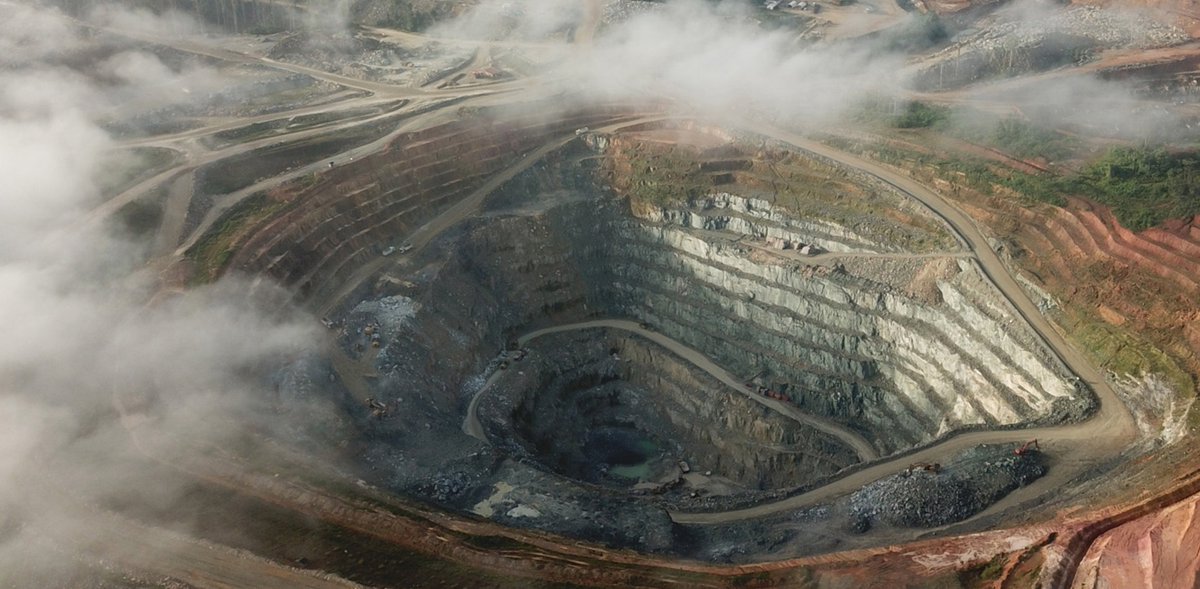
1/15 THREAD: Gold metal accounting, East Katanga -DRC- style
Hats off to these guys.
UG Mining using hand implements. Head grade 3-5 g/t Mining recovery 40%. -> 7.5t moved for 1 tonne of ore. Mining dilution 0% -> Hand pick the ore.
Hats off to these guys.
UG Mining using hand implements. Head grade 3-5 g/t Mining recovery 40%. -> 7.5t moved for 1 tonne of ore. Mining dilution 0% -> Hand pick the ore.

2/15
Look at this workmanship! This particular hole was 36m deep & consisted of about 30 x 1.2m high steps. At the bottom, they rat hole in all directions along the structure. Scary stuff geotechnically, but they're way better than most trained geologists at finding pay shoots.
Look at this workmanship! This particular hole was 36m deep & consisted of about 30 x 1.2m high steps. At the bottom, they rat hole in all directions along the structure. Scary stuff geotechnically, but they're way better than most trained geologists at finding pay shoots.

3/15 Its dangerous work, especially in the rainy season when these hole often collapse. Many die each year, but what else can a man in E. Katanga do? They are men of faith and they work for a "point" per day (0.1g/day or about $4 at today's price). 



4/15 I caught these miners going home after a week of working, day & night. They work typically 14-18 hrs each day and snatch sleep under plastic or grass lean-to's, cooking for themselves. Saving money for batteries and beer. Really good men. Very humbling, their happiness. 

5/15 We had it good, sleeping in the Catholic monastery each night after a three hour drive, the oldest brick building in the DRC, built by monks in 1935. They had the most amazing choir I have ever heard, which woke us during practice at 5:15 a.m. each day.
But I digress.

But I digress.


6/15 Back in the mining area, ore is carted in 40kg hessian bags on bicycles to milling stations. Here crushing takes place, again by hand.
Estimated losses to fines 5-10%
3g/t -> 2.7g/t


Estimated losses to fines 5-10%
3g/t -> 2.7g/t



7/15 Crushing is also done by hammer. Note how worn the hammer in his hand is. This man earns US$0.50/day doing this. Its enough for one meal of Cassava. Grim. All-in mining & processing cost is about $20/tonne + a lot of sweat, blood & tears. 

8/15 Milling with mercury added. Notice the mill ball behind the guy. His engine was broken that day, but he told us he normally mills about 3t/day. Its a 24 hr operation and he has 5 guys helping him. He is the boss man because he had money for an engine. And fuel. Its $4/litre. 

9/15 Have a look at this mill shell & bearing. It gives new meaning to white-metal bearings 😏, but it works! Milling is a batch process. Load the mill by hand. Run it for a few hours &then unload. Repeat until you run out of fuel, which comes only by bicycle, a journey of 1 day 

10/15 The milled product is then thoroughly mixed with mercury by treading -as you would tread grapes- in these UN-blue plastic lined "tanks". Afterwards the mercury amalgam is concentrated by sluicing off lighter material (sorry no pics). 

11/15 Here is the is an amalgam bead. About 50% pure gold. The mercury is vaporized in pots that are also used for cooking, in the grass huts in previous pictures. Overall recovery is around 60%. It was too valuable & they were too scared to show us the final product, which... 

12/15 is ferried in small, hidden quantities on bicycles to town. Here, it is sold to local buyers with dishonest scales, for just $500/oz at the time (2016). Transport and TC/RC's are the given reasons. As is always the case, terms UNreasonable are sold as MOST reasonable. 

13/15 Yet despite the theft, the poverty there is joy. How is this possible? They have nothing yet they have EVERYTHING. We could learn a thing or two here, with our 1st world problems, sulky, sullen faces and mobile phones more important than the other person in the room? 

14/15 Here are two gold buyers. These guys really did not like or want to be photographed but I managed to sneak in a shot nevertheless while they were talking to my father. These guys make good money: Perhaps $100/month or more. 

15/15 From here the gold goes by boat the 80km across Africa's longest & deepest lake, Lake Tanganyika to be sold to fat-cat Arab traders in Tanzania, who in 2016 were buying for around $7-900/oz, again on dishonest scales. They naturally do best of all, like all off-takers. 



@threadreaderapp unroll
• • •
Missing some Tweet in this thread? You can try to
force a refresh




















